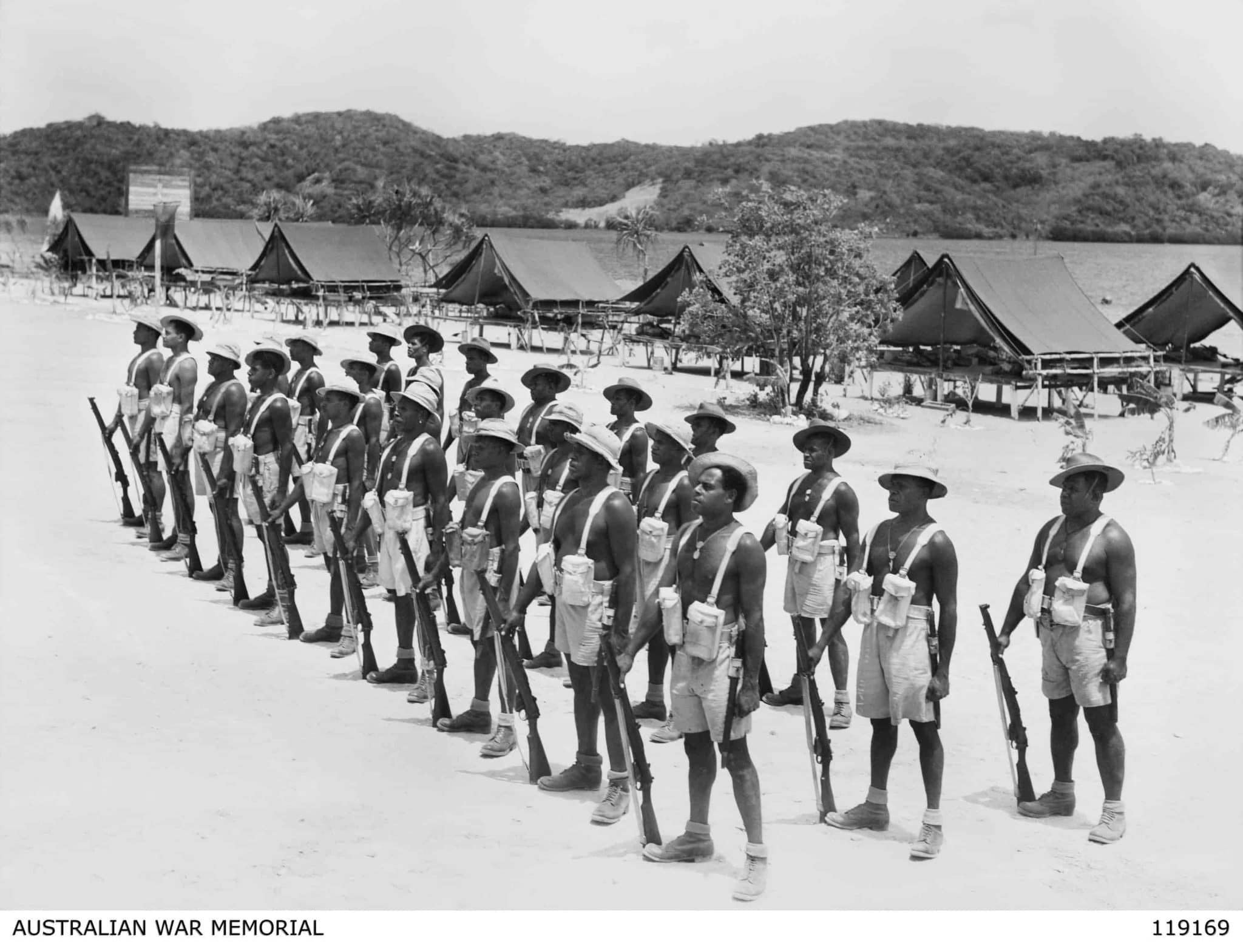
The History of Torres Strait in WW2
Rich in history, Vanessa Seekee and her husband Liberty have spent decades preserving Horn Island's most significant World War II sites.
To give us insight, Vanessa (in her words) explains more about the history of the battalion's formation and their importance during World War II.
Aboriginal and Torres Strait Islander readers should be aware the below includes pictures of people who have died.
Establishing the Torres Strait Light Infantry
The Torres Strait Light Infantry Battalion is the only Indigenous battalion formed in Australia’s military history.
880 men volunteered, making this number the highest rate of enlistment per population in the Commonwealth. They volunteered knowing they were not on the Commonwealth Census, they didn’t have the right to vote and they would find that they were paid half the wage of other diggers, but they still volunteered. This extraordinary rate stripped the island communities of men, leaving only 10 men of eligible age in the outer islands. The women were left to run the villages for 4–5 years without their men, fishing and raising market gardens to provide for families.
In May 1941, Prime Minister Curtin gave authority for the raising of a Company of Torres Strait Islander men with the first volunteers coming from Erub and Mer Islands, enlisting in June 1941.
In December 1941, Japan entered the war and the members of the Company were tasked with interning the Japanese divers and their families still living on Thursday Island.
Members of the Torres Strait Light Infantry Battalion on parade during World War II. Photo courtesy of the Australian War Memorial
The defence of Horn Island
Sections of the Company were sent to Horn Island as part of a coordinated effort to defend the aerodrome and fixed installations. In the early stages of 1942, the men of the Torres Strait Company were one of only two units defending Horn Island.
Horn Island is the second most attacked location in Australia, next to Darwin, however it wasn’t the only location targeted. The village of Iama was attacked from the air as the Zeros flew back from attacking Horn Island, leaving the women and children to spend the war years hiding in caves.
When the vessel Melbidir made its next run to the islands, hundreds of men volunteered. Between July to November 1942, the numbers rose from a Company of men to a full-strength Battalion — the Torres Strait Light Infantry Battalion was established.
Men served with their brothers, cousins, and sons, some families saying goodbye to all their sons. Recruits from Mer, Erub, Masig and Ugar formed A Company, recruits from Badu, Moa and Mabuiag Islands formed B Company. C Company was a blend of both A and B Companies, while D Company men were from Saibai, Dauan and Boigu Islands.
October to November 1943 saw a patrol into Dutch New Guinea, where seven soldiers had volunteered to go with Wing Commander Thompson, and then Captain Wolfe, on the vessel Rosemary to establish watching posts, and report on Japanese activity around the Oba, Wildeman and Eilanden Rivers. It was while doing a reconnaissance of the Ipoekwa River that they encountered a Japanese barge head on around a bend. Fierce fighting took place, with several being wounded before they could get back to their watching post on the Eilanden River.
World War II Plane Dance. Photo courtesy of the Australian War Memorial
Pay disparity and strikes
This patrol saw the issue of pay disparity brought to the forefront. The soldiers of the Torres Strait Light Infantry Battalion were paid around half the wage of other soldiers. After the patrol, some of the men came forward to their officers to enquire about the matter of increased pay to that equal of non-Indigenous soldiers. Growing unrest led to a strike on 30 December 1943, where the men refused to report to duty. Strikes had been used effectively in the pearling industry; however, the army saw it as mutiny. After their officers assured the soldiers’ case would be heard, the Battalion returned to work the next day. On 1 Feb 1944, a Departmental Conference raised the pay to 66% of non-Indigenous soldiers.
The expansion of the unit’s roles led to training in more specialist positions, skills and trades that were invaluable in post-war Torres Strait. The Torres Strait Light Infantry Battalion had evolved into a unit that could undertake all advanced base service operations, in addition to being trained as infantry soldiers.
Upon the war’s end, the men were demobilised and travelled back to their island homes.
“They were loyal, disciplined soldiers and I was very proud to have served with them. At the end of the war, they were demobbed and sent home on the luggers. I recall the Murray Island soldiers departing the Thursday Island wharf….and singing farewell to us on the wharf. We could still hear them as the boat sailed off into the distance. I don’t think there was anyone there that day that wasn’t affected by their goodbye.” — Sgt Cole
Today, the descendants of these men serve in all branches of the Australian Defence Force, continuing a tradition that began with the men of the Torres Strait Light Infantry Battalion.
Members of the TSLI Battalion and officers at Rose Camp pictured on Thursday Island in the 1940s.(Supplied: State Library of Queensland)
Want to know more?
Visit the Queensland World War II Historic Places website to read further information about Horn Island, written by Vanessa Seekee.



